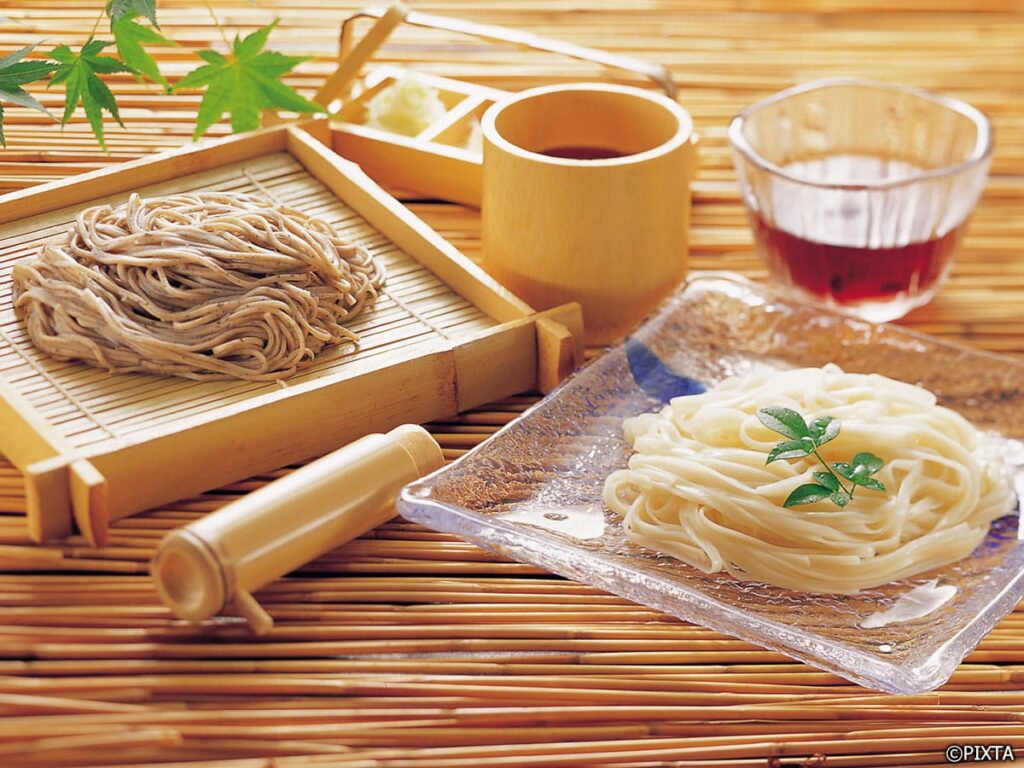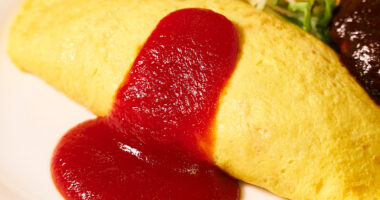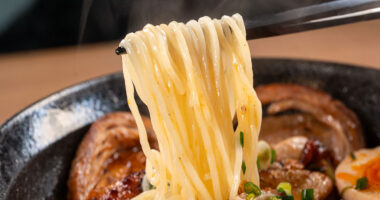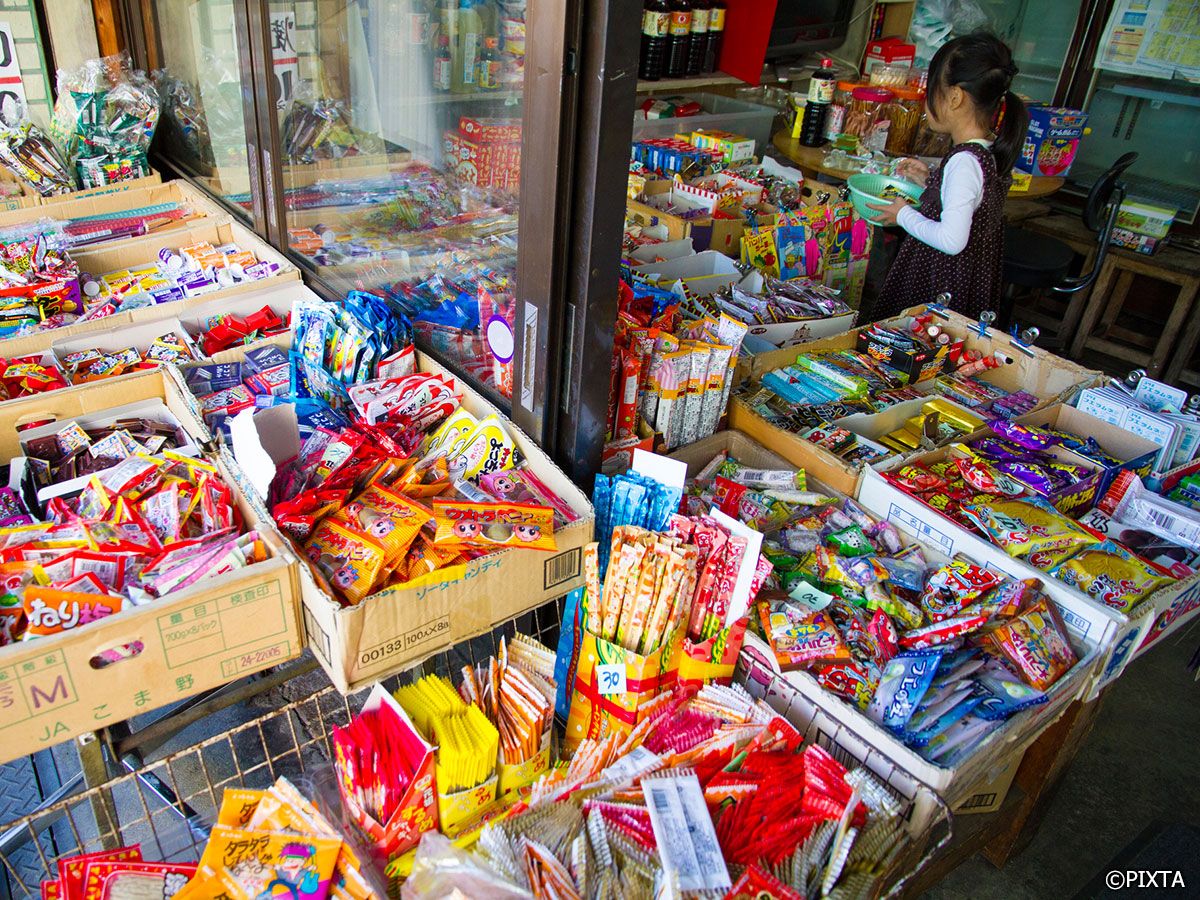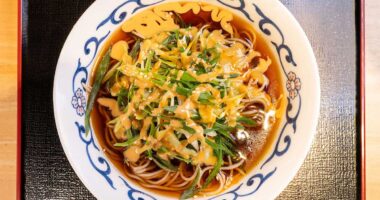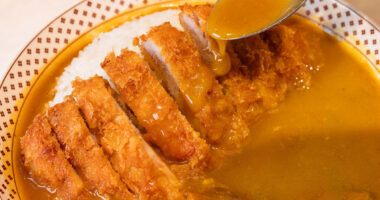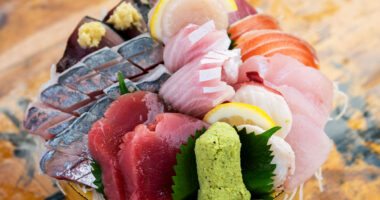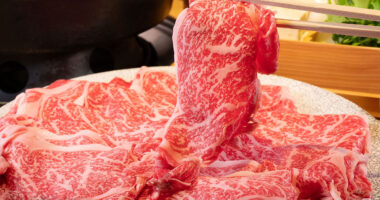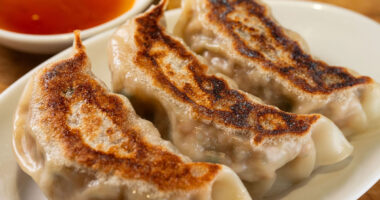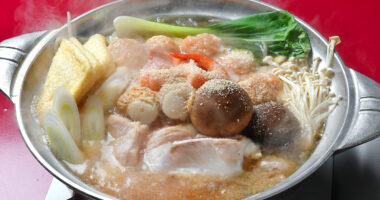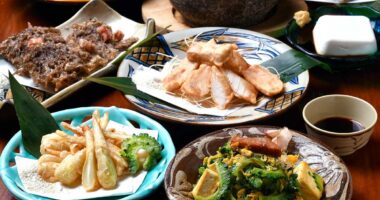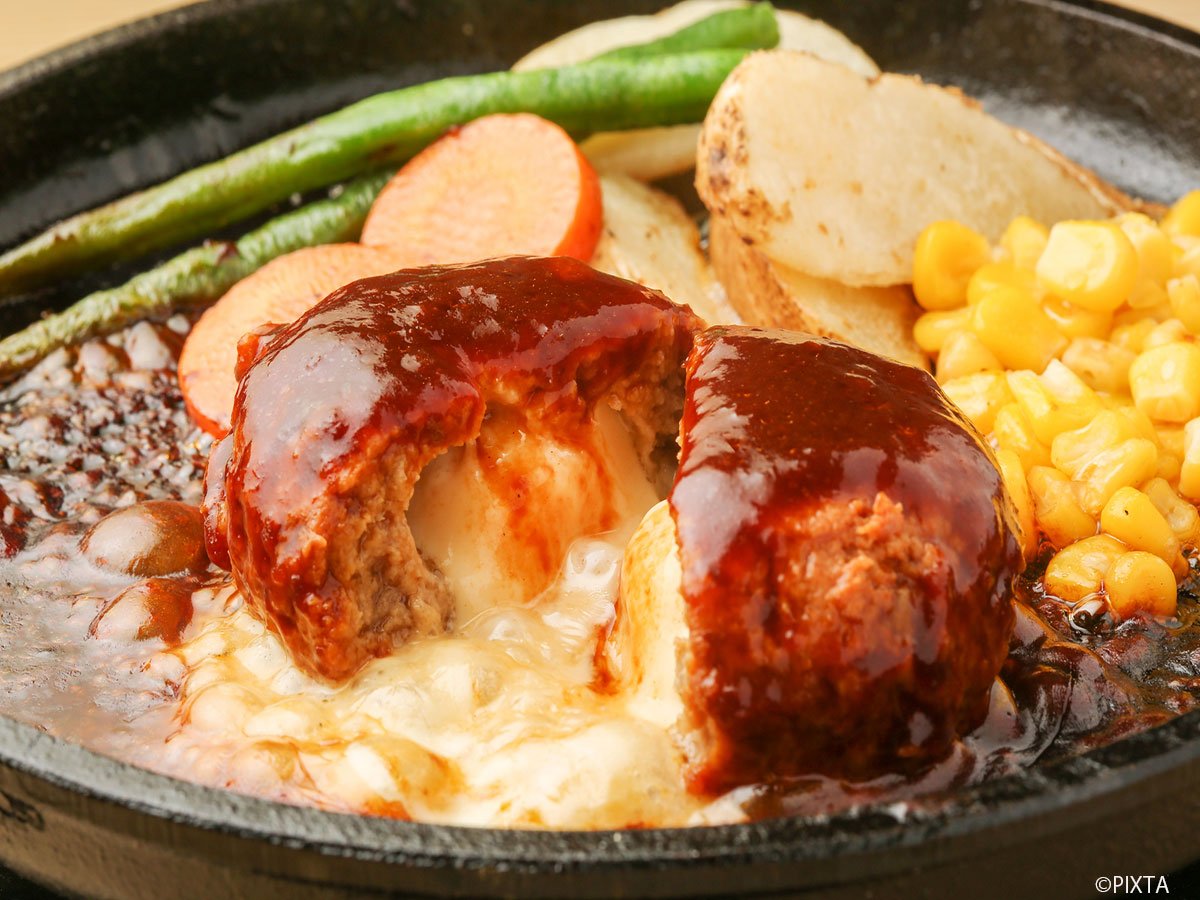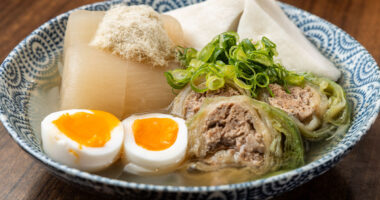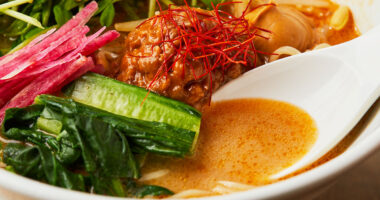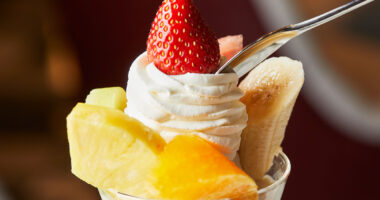When it comes to Japanese cuisine, dishes like sushi and ramen tend to steal the limelight. However, Japan’s food scene is teeming with more subtle treasures that encapsulate the country’s unique flavors and culinary ethos. Two such gems are soba (written either as 蕎麦 or そば) and udon (usually written as うどん but also as 饂飩). Diving into their world is not just a gastronomic adventure, but also a lesson in Japanese history, culture, and regional diversity.
What are soba and udon?
Soba is a type of noodle made primarily from buckwheat flour. It has a distinctive nutty flavor and firm texture that set it apart from your average noodle. Soba can be served chilled with a dipping sauce or hot in a flavorful broth.
In contrast, udon is a thicker, whiter noodle made from wheat flour. Udon’s milder taste and soft, chewy texture make it a versatile choice that works well in various dishes. Like soba, udon can be enjoyed hot or cold, depending on the season and the dish.
Where to get soba and udon
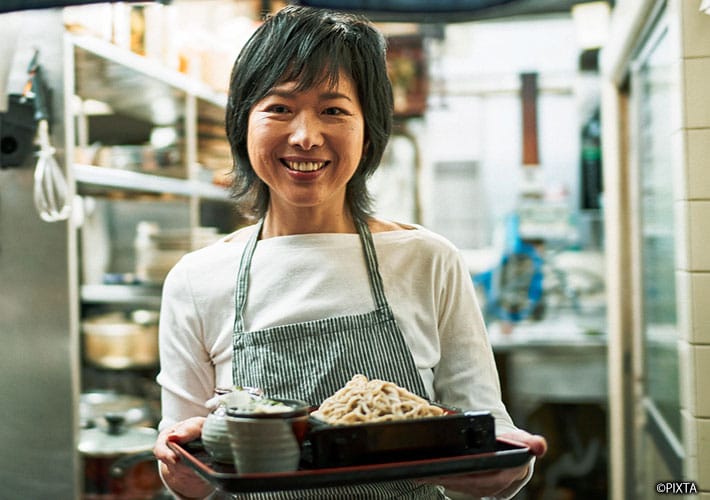
Soba noodles about to be served at a specialized soba restaurant.
Whether you’re in the buzzing metropolis of Tokyo or a sleepy countryside town, you’ll have no trouble finding a place that serves soba. Specialized soba restaurants, or 蕎麦屋 sobaya, are scattered across the country, offering a variety of dishes that highlight the versatility of these noodles. You’ll also find soba in supermarkets and convenience stores, both in fresh and instant versions.
Udon is equally widespread, available at a multitude of venues, from high-end restaurants to casual noodle shops. Particularly in places like Kagawa Prefecture, known as the udon kingdom of Japan, these thick, hearty noodles are a staple at every meal. Convenience stores and supermarkets also stock both fresh, frozen and instant udon.
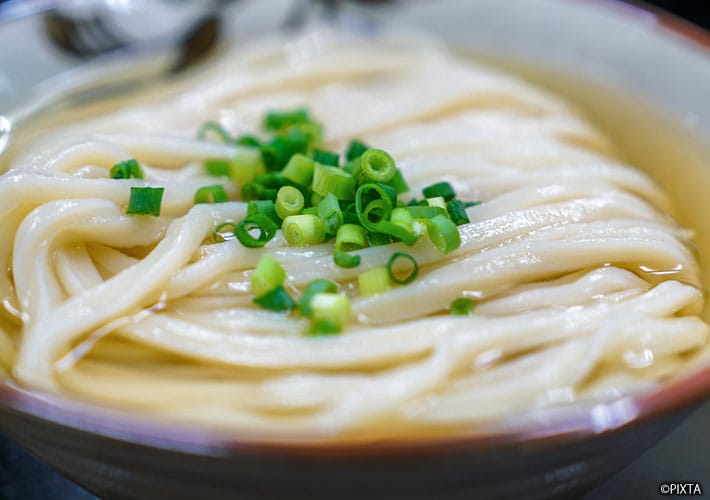
A bowl of udon garnished with chopped green onions at a noodle shop.
Both udon and soba follow a similar price structure. The most inexpensive bowls will cost between a few hundred yen to up to 600 JPY at udon or soba chain shops and standing stalls in train stations, between 600 and 1,000 JPY at specialized udon and soba restaurants, and between 1,000 and 2,000 JPY at high-end restaurants. Meanwhile, fresh soba and udon at convenience stores and supermarkets usually cost between 400 and 600 JPY, while instant soba and udon will cost around 200 JPY.
Types of soba and udon
Soba and udon, with their myriad of types and preparations, encapsulate the regional and seasonal diversity of Japanese cuisine. They each come with their distinct noodle variations and serving styles, both hot and cold, offering a wide array of flavors and experiences.
Soba
Cold soba dishes
ざるそば zaru soba and もりそば mori soba: Served on a bamboo tray known as a zaru, these chilled soba noodles are accompanied by a savory dipping sauce, making for a refreshing meal especially favored during the summer months. Mori soba is like zaru soba but served neatly piled on a dish instead of a bamboo tray. Both provide a cool and light dining experience and are often garnished with shredded nori seaweed.

A refreshing meal of cold zaru soba noodles.
Versatile soba types
きつねそば kitsune soba: Named after the Japanese word for fox, this soba dish is topped with 油揚げ aburaage, a piece of sweet, seasoned tofu, which is said to be a favorite of foxes in Japanese folklore. This dish can be enjoyed both hot and cold.
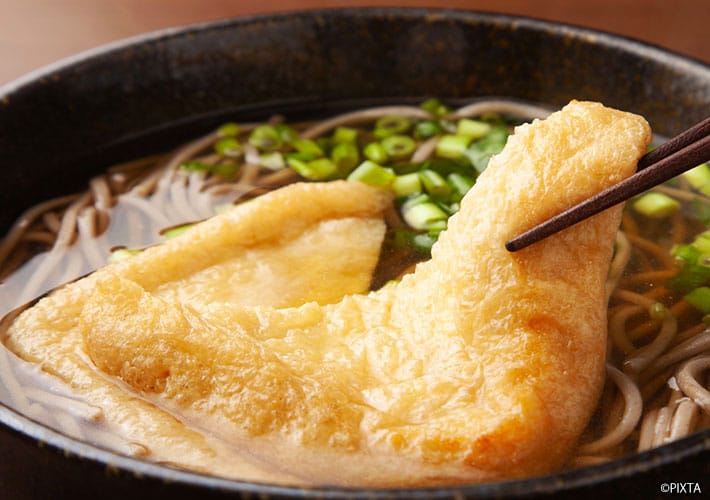
Kitsune soba topped with aburaage.
たぬきそば tanuki soba: This soba preparation features a topping of tempura batter bits, known as tenkasu, offering an interesting textural contrast. It can be served in a hot broth or as a chilled noodle dish with a dipping sauce.
月見そば tsukimi soba: Meaning “moon-viewing” soba, this dish is topped with a raw egg yolk when served hot, representing a full moon. It’s a hearty dish enjoyed especially on cold days.
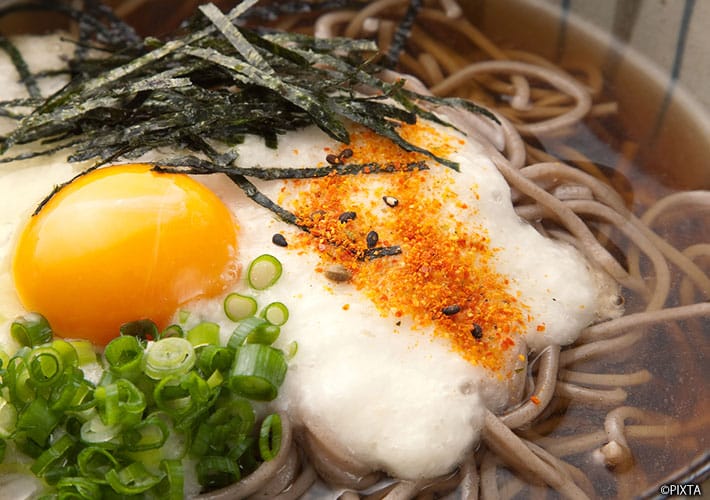
Tsukimi soba with egg yolk, with grated yam as an additional topping.
おろしそば oroshi soba: A zesty dish featuring chilled or warm soba noodles served with a topping of daikon radish, finely grated to a snowy consistency.
In addition to these, there are also other versatile soba types like とろろそば tororo soba served with sticky, grated yam, 天ぷらそば tempura soba with crispy tempura, かき揚げそば kakiage soba topped with a mixed tempura fritter, and 山菜そば sansai soba featuring wild mountain vegetables. 南蛮そば nanban soba is almost always served hot, with green onions and leek, and either chicken or duck meat. It’s sometimes also available in a curry-flavored broth.

A piping hot bowl of tempura soba.
Udon
Cold udon dishes
かけうどん kake udon and ぶっかけうどん bukkake udon: Kake udon are plain noodles, served chilled with a soy-based dipping sauce, ideal for a light and refreshing meal. Bukakke udon, on the other hand, are topped with a variety of ingredients like tempura bits, green onions, and grated daikon, then drizzled with a soy-based sauce. It’s usually served chilled, but it can also be served hot.
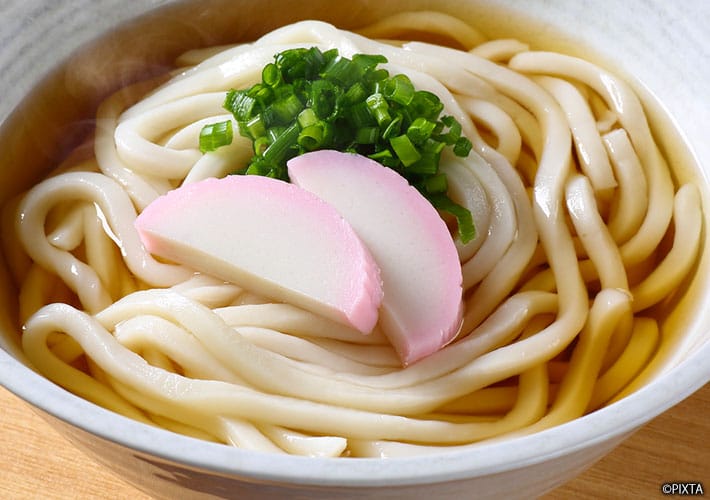
A refreshing bowl of chilled kake udon.
Versatile udon types
Kitsune, tanuki and tempura udon: Versions of kitsune soba, tanuki soba and tempura soba are also available with udon noodles. Tanuki and tempura udon are particularly enjoyable with the contrasting chewiness of udon and the crunchiness of tenkasu and tempura.
カレーうどん karē udon Curry udon: Born at the turn of the 20th century, this fusion of udon with a rich, hearty curry sauce, creates a dish that is warming and satisfying. It’s a popular choice during the colder months, but can also be enjoyed as a chilled dish for a unique spin on traditional curry.

Curry udon is warming and satisfying.
力うどん chikara udon: A comforting hot udon dish, chikara udon is topped with grilled mochi (rice cakes), providing a pleasing contrast between the chewy mochi and the soft udon noodles.
肉うどん niku udon: This hot dish features udon noodles served in a savory broth with tender slices of beef. It’s a hearty meal that showcases the richness of Japanese meat dishes.

If you love beef and noodles, you’ll want to try niku udon!
Regional varieties
The beauty of soba and udon is their regional diversity. The thickness of udon varies across regions, from flat and broad きし麵 kishimen in Nagoya to the fat 讃岐うどん Sanuki udon in Kagawa Prefecture and the thin 稲庭うどん Inaniwa udon from Akita Prefecture.
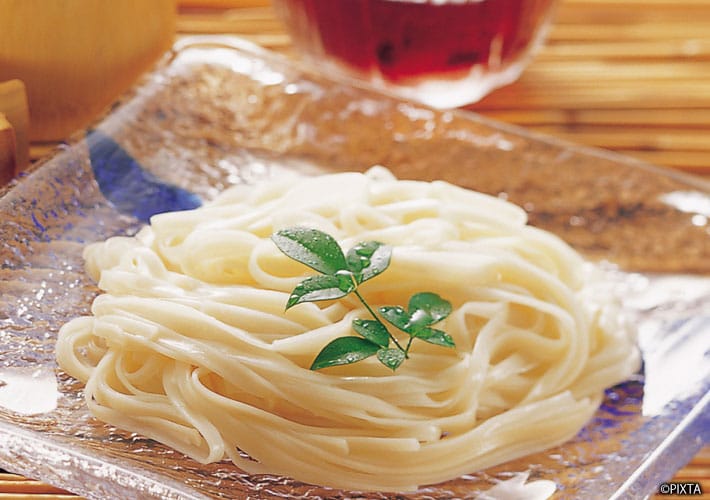
Inaniwa udon is characterized by thin noodles.
Soba, too, shows regional variations such as the chewy and beautifully presented へぎそば hegi soba from Niigata Prefecture, the greenish 藪そば
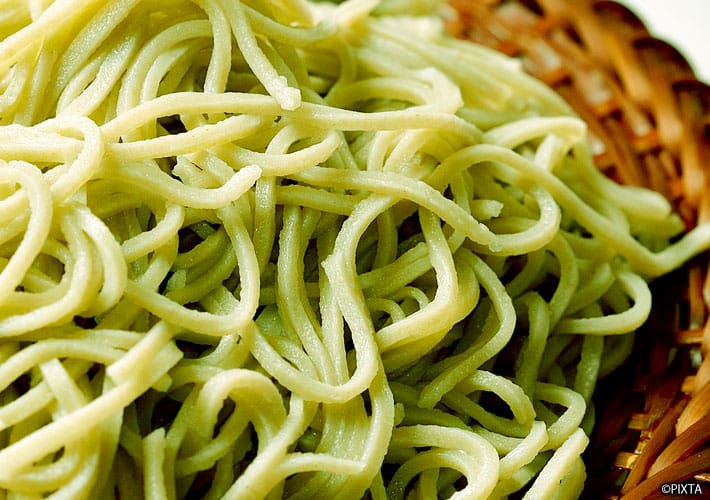
Greenish Yabu soba originated in Tokyo.
Tips for enjoying soba and udon
Soba and udon are traditionally slurped in Japan. This isn’t considered impolite – quite the contrary! Slurping enhances the flavors and helps cool the noodles, making them taste even better. Don’t be shy, slurp away!
Experiencing a soba workshop can be a highlight of your trip to Japan. You get a chance to learn about the meticulous process of soba noodle making from scratch, all the way to enjoying your self-made soba dish. Similarly, there are udon workshops available where you can enjoy kneading the dough, cutting the noodles, and finally, relishing your self-made udon.
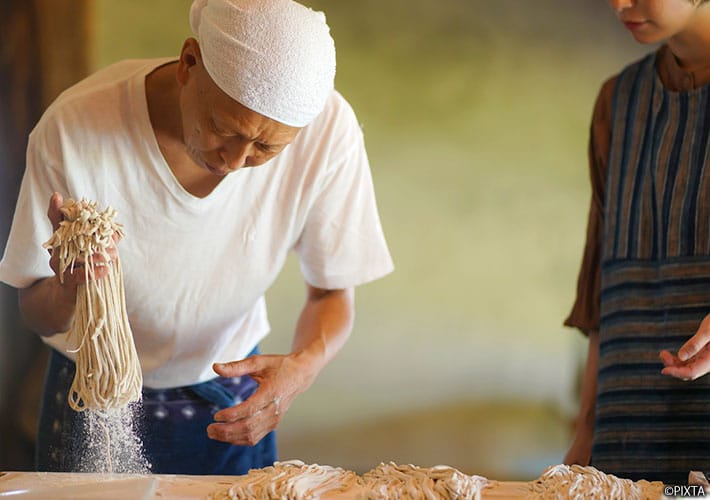
Learning how to make soba at a workshop.
Finally, at good soba shops, remember to appreciate soba-yu, the hot water in which the noodles were boiled. It’s often served in a separate pot so you can add it to the leftover dipping sauce, creating a delightful soup to finish your meal.
In conclusion, whether you prefer the delicate soba or the chewy udon, there’s no doubt that these noodles hold a special place in the heart of Japanese cuisine. Explore the different types and flavors, and immerse yourself in the culture and tradition that goes into each dish. Remember, in Japan, it’s not just about eating, it’s about the experience. Happy slurping!
